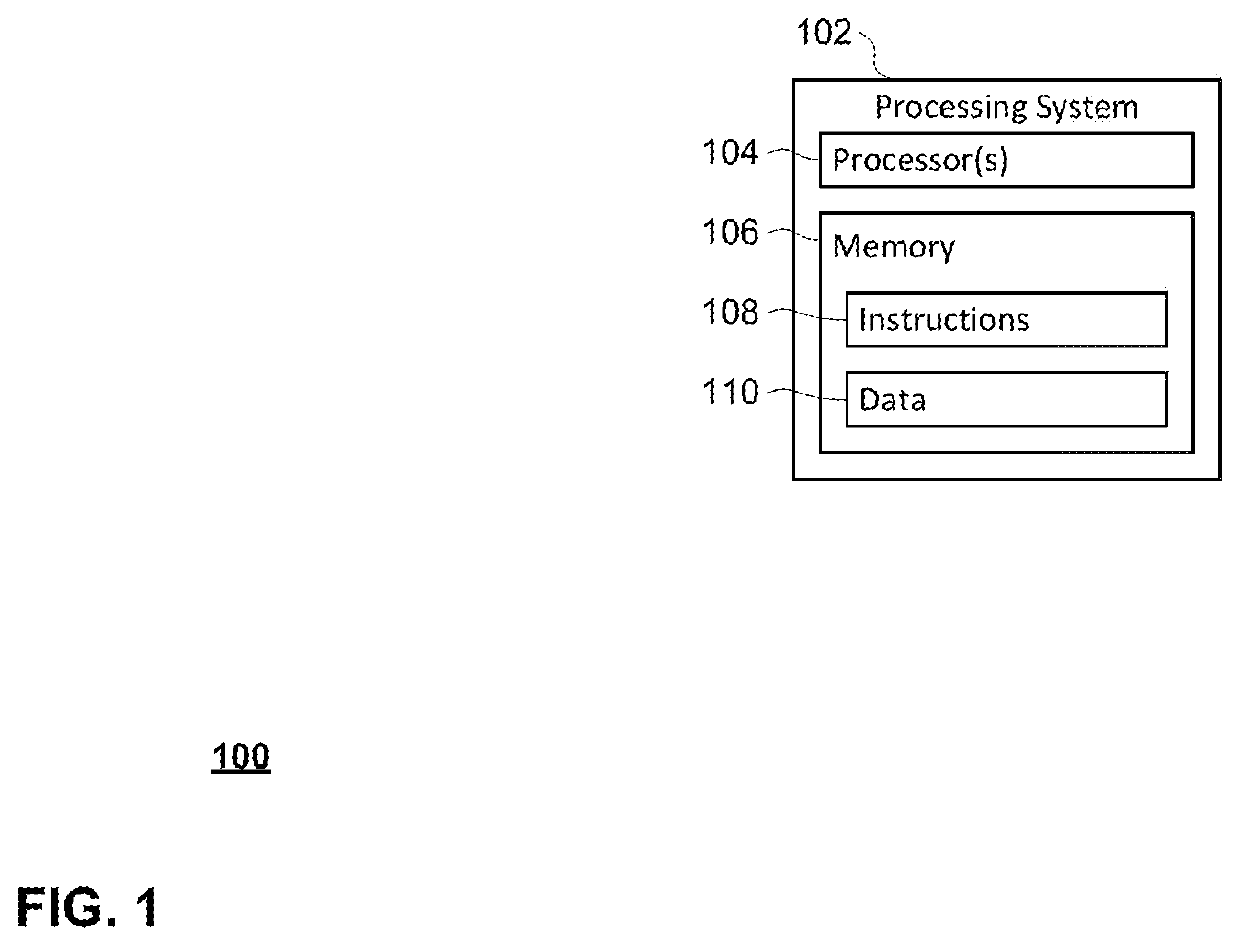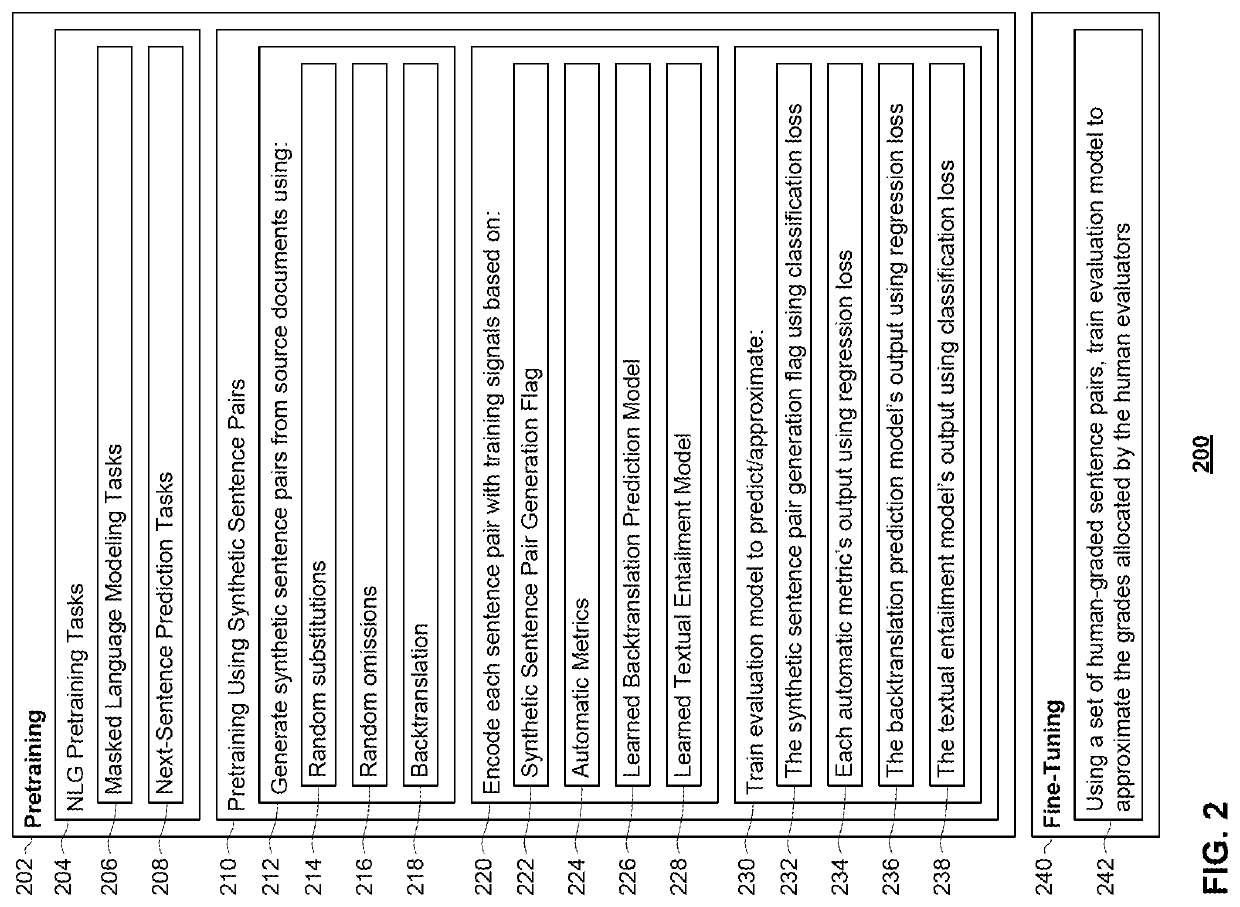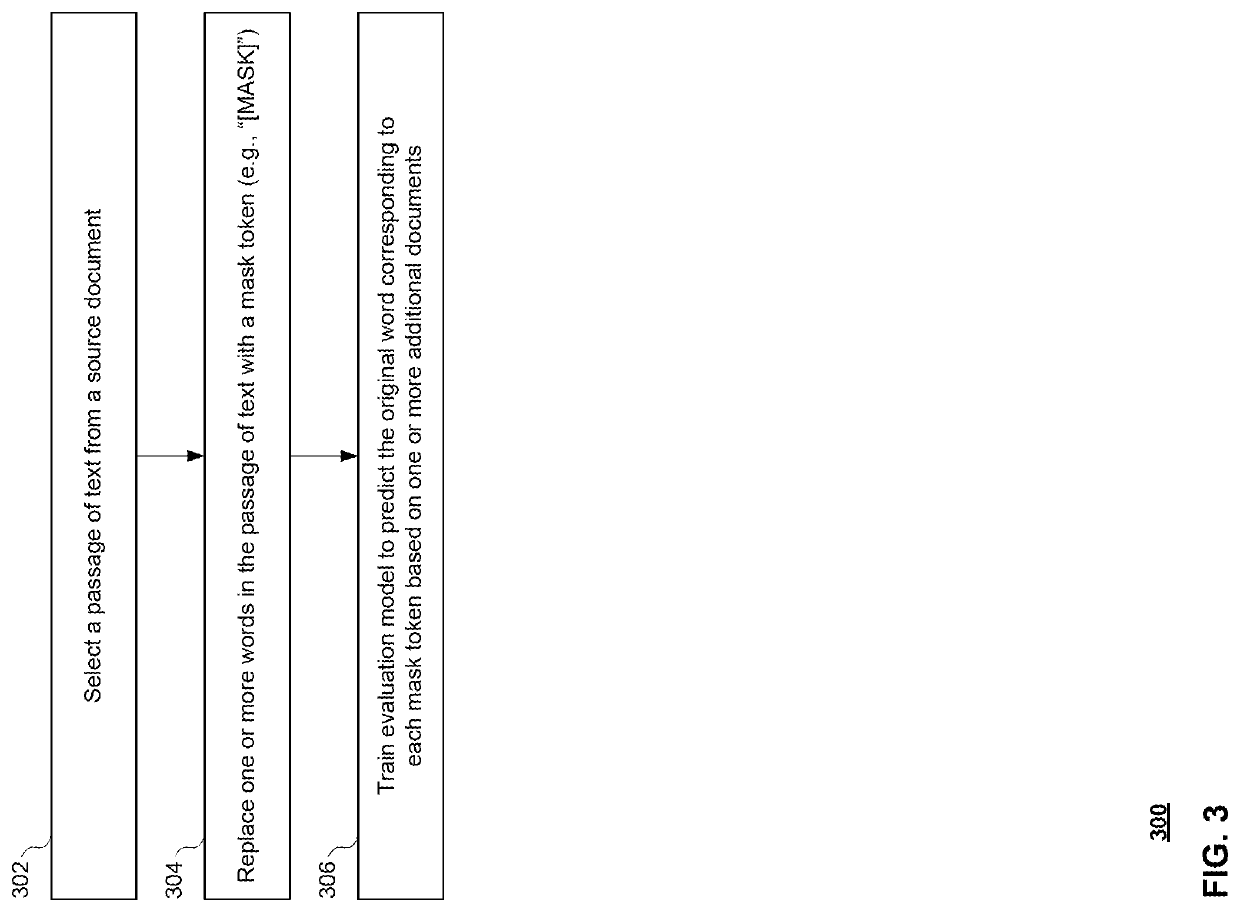Learned evaluation model for grading quality of natural language generation outputs
a natural language and learning evaluation technology, applied in the field of natural language research, can solve the problems of inconsistent results, excessive literality, and prohibitively time- and labor-intensive use of human evaluators in large-scale tests, and achieve the effect of reducing the number of human evaluators, and improving the quality of natural language generation outputs
- Summary
- Abstract
- Description
- Claims
- Application Information
AI Technical Summary
Benefits of technology
Problems solved by technology
Method used
Image
Examples
Embodiment Construction
[0012]The present technology will now be described with respect to the following exemplary systems and methods.
Example Systems
[0013]A high-level system diagram 100 of an exemplary processing system for performing the methods described herein is shown in FIG. 1. The processing system 102 may include one or more processors 104 and memory 106 storing instructions 108 and data 110. The instructions 108 and data 110 may include the evaluation model described herein, as well as some or all of the data used in pretraining and / or fine-tuning of the evaluation model. Similarly, the instructions 108 and data 110 may include the NLG model described herein. However, any of the evaluation model, NLG model, pretraining data, and / or fine-tuning data may also be maintained on one or more separate processing systems or storage devices to which the processing system 102 has access. For example, the evaluation model could be stored on a cloud-computing system, in which case the processing system 102 m...
PUM
 Login to View More
Login to View More Abstract
Description
Claims
Application Information
 Login to View More
Login to View More - R&D
- Intellectual Property
- Life Sciences
- Materials
- Tech Scout
- Unparalleled Data Quality
- Higher Quality Content
- 60% Fewer Hallucinations
Browse by: Latest US Patents, China's latest patents, Technical Efficacy Thesaurus, Application Domain, Technology Topic, Popular Technical Reports.
© 2025 PatSnap. All rights reserved.Legal|Privacy policy|Modern Slavery Act Transparency Statement|Sitemap|About US| Contact US: help@patsnap.com



